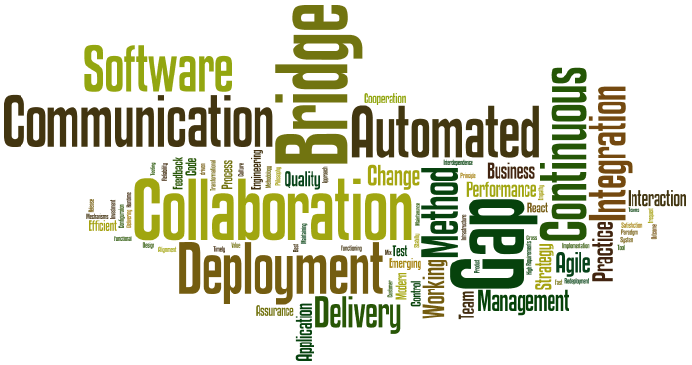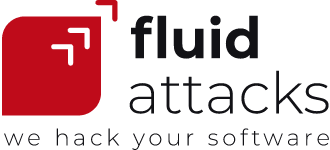| 5 min read
Table of contents
DevOps is a predominant phenomenon, a new way of thinking and working in software engineering that is receiving a lot of attention nowadays. The word DevOps is a combination of the words 'Development' and 'Operations.' In 2016, Jabbari et al. stated that for this concept there was no concrete or complete definition. That's why they decided to do a review and collect, analyze and compare definitions from scientific papers to consolidate one. In their research, 49 primary studies were meeting their requirements. They identified in those studies "the central components of DevOps definition." That's something we'll review in this post, to improve our understanding of that concept.

Word-cloud with the common terms used for definitions of DevOps in the studies analyzed, excluding 'Development' and 'Operations' —taken from Jabbari et al. (2016).
Components of DevOps definition
As a first component (C1), Jabbari and colleagues show us the already mentioned combination of terms 'Development' (Dev) and 'Operations' (Ops). The second component (C2) comprehends communication, collaboration and teamwork between developers and operators. In the third component (C3), we can see "the main goal of DevOps," which is to bridge the gap between Dev and Ops teams. From the fourth component (C4), it is assumed that DevOps is a modern software development method that unifies other methods and tools. The fifth component (C5) is where DevOps is seen as a paradigm of software delivery with continuous feedback, fast response to modifications and automated delivery pipelines. The sixth component (C6) shows the automatic "deployment process from the source code in version control to the production environment." The seventh component (C7) is related to 'continuous integration.' Finally, the eight component (C8) is where DevOps is taken as a method where quality assurance is essential for improving performance.
With those components identified, Jabbari et al. give us the following definition of DevOps:
DevOps is a development methodology (C4) aimed at bringing the gap (C3) between Development and Operations (C1), emphasizing communication and collaboration (C2), continuous integration (C7), quality assurance (C8) and delivery (C5) with automated deployment (C6) utilizing a set of development practices.
Now, with this definition as a guide, we can easily delve into different issues about DevOps and always know what component or part of this methodology we are referring to.
Exploring a bit of DevOps
So, for instance, let's expand what is said in C1, C2 and C3. As our CTO, Rafael Alvarez, explains in one of his conferences, there are typically two teams in companies where software is created and sold as a product or as a service. A team of developers and a team of operators. In short, the first team, with its programming knowledge, creates the app. The second team, which manages the hardware and operating systems, is in charge of deployment (making the app available for customer use) and service.
Rafael explains that the development team is often asked to change the software quickly. In contrast, the operations team is asked to ensure that the infrastructure remains stable and changes slowly. Therefore, the parties tend to struggle with "political noise," slowing down the overall process. Here is where DevOps methodology comes into play, bringing those two teams together. As Rafael mentions, people are no longer grouped by task or function but by product (or service), and we then have cross-functional teams.

Image taken from quickmeme.com.
Now, focused on C4 (not the explosive), we have that DevOps is related to some software development methods: Waterfall, Agile, and Lean. Let's extend the information about this, mostly from what Freddy Yumba shares.
Waterfall is a traditional linear plan-driven approach to software development. So, it is assumed that all requirements can be specified before starting the development process. Each phase must end before moving on to the next. Results in detailed documents must be signed, and these are measures of progress. In this model, the integration of later changes may mean redesigning the entire system. So, it is said that it doesn't accommodate well to modifications requested by users and that it doesn't give rise to creativity.
Instead, Agile focuses more on collaboration "between development teams, business people and customer," and on creativity and rapid response to user needs. Through this methodology, earlier and more frequent releases are sought. Besides, communication of the development plan is preferred through face-to-face conversations, rather than through documentation as in Waterfall.
Finally, Lean, according to Yumba, is more oriented towards improving production system operations, project management and the delivery of products and services. Some people see Lean as a way to bring agility from the project level to the organization level. In the Lean methodology, there's an essential aim: the elimination of waste, anything that doesn't add value to the development process. Therefore, unnecessary meetings, documentation and tasks are discarded as much as possible.
DevOps arises by mixing Agile and Lean principles and practices, but it's more than that. As the author says: DevOps is "a new culture, corporate philosophy, and way of working." It is a result of the experiences of many people and the desire to create and maintain organizations with high-speed, high-performance processes and exceptional IT products and services.
Well, talking about more components, continuous integration (C7) is one of the drivers of the DevOps culture. We know that development practice can be made from different machines and locations. With continuous integration, we mean that the resulting code is integrated into a shared repository over and over again during the day, even every day. This is something different from what we were used to, years ago, when integration was quite late.
Additionally, as part of DevOps methodology, an automated build verifies each check-in, which serves to detect bugs and other problems quickly (C8), without waiting for full code integration and the deployment of the entire system. Then we have continuous, automated and fast delivery (C5), with software always ready for the production environment, to be released to users whenever required.
In DevOps, there's increased responsiveness to customer requirements and needs. With a continuous deployment (C6), companies in the web domain, as is commented by Lwakatare and colleagues, have "the opportunity to quickly verify whether their new software features are useful to customers and [can adopt] practices such as A/B testing." In this, "users are randomly assigned to one of the two variants of the system for experimentation." Quick feedback becomes quite useful to evaluate the quality of the software and continuously repair or improve what is needed in the development process.
Today, many companies offer software as a service (SaaS) on the web. "Resource virtualization and cloud computing have provided the required building blocks" (Spinellis, 2016). DevOps proves to be quite useful for those companies with SaaS, since from this methodology, extensive control of the infrastructure is achieved, and the software can be quickly restructured and re-released if there are some problems.
What happens if we implement the term "security" in this context?
We get the much mentioned DevSecOps.
And what does that term mean?
We break down the concept and mention some of its basics here.
Table of contents
Share
Recommended blog posts
You might be interested in the following related posts.











